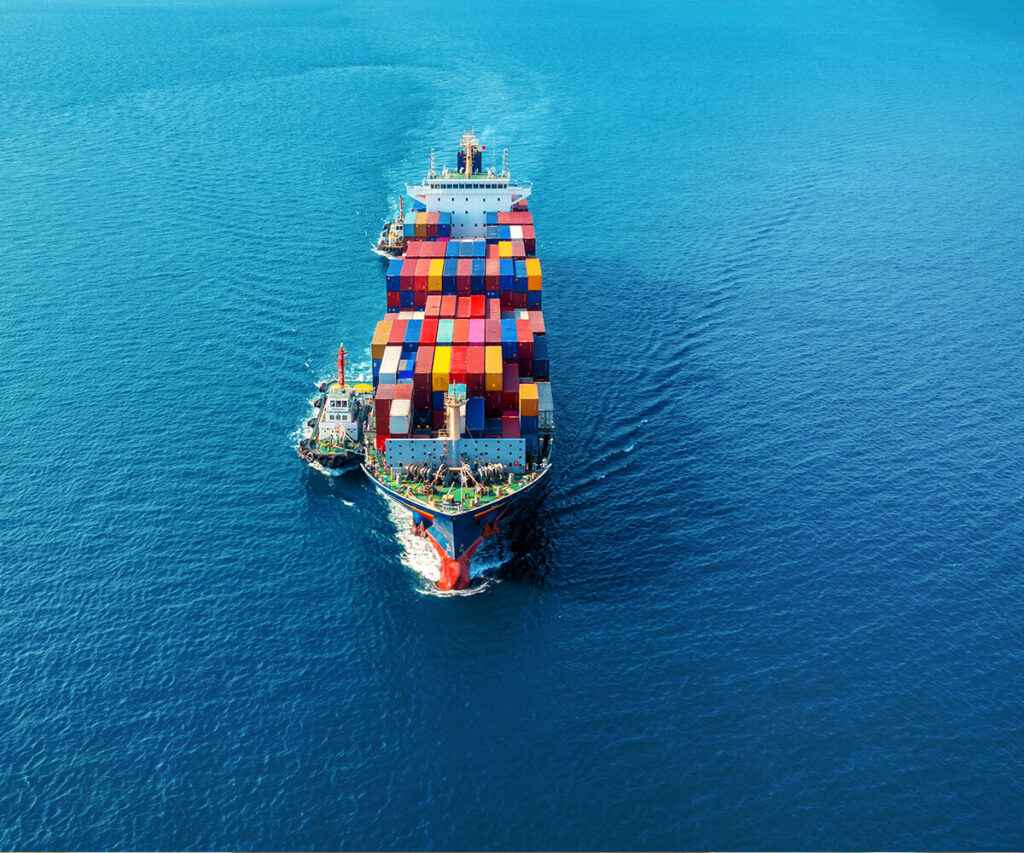- By Della tj
- September 22, 2025
- Sea Freight, Shipping
Shipping cargo internationally requires balancing cost, speed, and reliability. For Canadian importers, sea freight from China to Canada offers the most cost-effective solution for bulk shipments. Although the process involves customs clearance, transit time planning, and carrier selection, the long-term savings make it the preferred choice for most businesses. This guide explains everything you need to know to ship by sea confidently.
Why Choose Sea Freight from China to Canada?
Sea freight remains the most popular method for trade between China and Canada. Compared with air freight, it offers significantly lower costs for large volumes.
- Cost advantage: Ocean freight is up to 5–6 times cheaper than air freight.
- Capacity: Containers allow easy handling of large or heavy cargo.
- Flexibility: Options include FCL (Full Container Load) and LCL (Less than Container Load).
Moreover, Canada’s major ports such as Vancouver, Prince Rupert, Montreal, and Halifax are well-equipped to handle shipments from Shenzhen, Ningbo, Shanghai, and Qingdao.
How Long Does Sea Freight from China to Canada Take?
Transit time depends on the port pair and service type. Direct services from East China to Vancouver are faster than routes to the East Coast via the Panama Canal.
Average Sea Freight Transit Times
| Origin Port (China) | Destination Port (Canada) | Transit Time (Days) |
|---|---|---|
| Shanghai | Vancouver | 15–18 |
| Ningbo | Vancouver | 16–20 |
| Shenzhen (Yantian) | Vancouver | 17–21 |
| Qingdao | Montreal | 30–35 |
| Shanghai | Toronto (via Montreal) | 32–38 |
| Ningbo | Halifax | 34–40 |
Additionally, seasonal demand and carrier scheduling can affect transit times, so importers should always plan shipments 1–2 weeks in advance.
What Are the Costs of Sea Freight from China to Canada?
Shipping costs vary according to container size, cargo weight, season, and fuel surcharges.
Typical Container Freight Rates (USD, 2025 Estimates)
| Container Type | Shanghai → Vancouver | Ningbo → Montreal | Shenzhen → Halifax |
|---|---|---|---|
| 20GP | $2,150 – $2,600 | $3,800 – $4,200 | $4,000 – $4,500 |
| 40GP | $3,900 – $4,500 | $6,800 – $7,200 | $7,000 – $7,600 |
| 40HQ | $4,200 – $4,800 | $7,100 – $7,500 | $7,400 – $7,900 |
Note: Rates fluctuate monthly based on global demand and container availability.
Moreover, surcharges like BAF (Bunker Adjustment Factor) and GRI (General Rate Increase) apply seasonally. Importers should request updated quotes before booking.
FCL vs. LCL: Which Option Should You Choose?
Choosing between FCL and LCL depends on cargo size, urgency, and budget.
Comparison of FCL vs. LCL
| Factor | FCL (Full Container Load) | LCL (Less than Container Load) |
|---|---|---|
| Cargo Volume | >15 CBM recommended | <15 CBM ideal |
| Cost per Unit | Lower for bulk | Higher per CBM |
| Transit Time | Faster, fewer delays | Longer, due to consolidation |
| Risk of Damage | Minimal, sealed container | Higher, shared container |
| Customs Handling | Easier, single declaration | Complex, multiple shippers involved |
As a result, businesses with smaller shipments often start with LCL, while established importers prefer FCL for efficiency.

Customs Clearance Requirements in Canada
Proper documentation ensures smooth entry into Canada. Missing or incorrect paperwork can lead to delays and extra charges.
Key Documents Checklist
| Document | Purpose |
|---|---|
| Bill of Lading (B/L) | Contract of carriage between shipper and carrier |
| Commercial Invoice | Detailed description of goods and value |
| Packing List | Specifies cargo contents and packaging details |
| Importer Number (BN) | Required for Canadian customs clearance |
| Certificate of Origin | Determines duty rates under trade agreements |
| HS Code Declaration | Essential for tariff classification |
Additionally, some goods such as food, electronics, and medical devices may require permits or special certifications.
Real-World Shipping Cases
Case 1: Electronics from Shenzhen to Vancouver
- Cargo: 2×40HQ containers of consumer electronics
- Mode: FCL sea freight
- Cost: $9,200 total
- Transit Time: 18 days
- Result: Delivered on schedule, customs cleared within 48 hours.
Case 2: Furniture from Ningbo to Toronto
- Cargo: 12 CBM wooden furniture
- Mode: LCL sea freight via Montreal
- Cost: $2,100
- Transit Time: 35 days
- Result: Minor delay due to consolidation, but cost savings were significant.
Comparing Sea Freight with Other Transport Modes
Although sea freight dominates trade between China and Canada, alternatives like air and rail exist.
Mode Comparison Table
| Mode | Transit Time | Cost (vs. Sea) | Best For |
|---|---|---|---|
| Sea Freight | 15–40 days | Baseline | Bulk goods, heavy cargo |
| Air Freight | 3–7 days | 5–6× higher | Urgent, high-value goods |
| Rail + Truck | 20–30 days | 1.5–2× higher | Goods to central Canada quickly |
| Courier | 3–6 days | 6–8× higher | Small parcels, e-commerce orders |
Without a doubt, sea freight remains the most economical solution for importers handling large shipments.
How to Reduce Sea Freight Costs?
Businesses can reduce costs by adopting smart shipping strategies:
- Book early during peak seasons (Aug–Nov).
- Consolidate shipments to reach FCL whenever possible.
- Work with reliable freight forwarders for competitive rates.
- Optimize packaging to reduce volumetric weight.
- Take advantage of trade agreements like CPTPP for duty relief.
Accordingly, cost planning should include not only freight charges but also customs duties, inland delivery, and insurance.
Common Challenges in Sea Freight from China to Canada
Although sea freight is reliable, importers face certain challenges:
- Port congestion in Vancouver during peak season.
- Delays due to customs inspections.
- Currency fluctuations affecting freight rates.
- Seasonal capacity shortages leading to higher costs.
However, working with experienced freight forwarders minimizes risks and ensures smoother operations.
Should You Use a Freight Forwarder?
Many Canadian importers rely on freight forwarders to manage logistics. Forwarders coordinate carriers, customs, warehousing, and delivery.
Advantages of using a freight forwarder:
- Professional handling of customs paperwork.
- Better access to negotiated freight rates.
- End-to-end visibility across the supply chain.
- Reduced risk of delays.
Therefore, small and medium businesses gain significant advantages by outsourcing logistics management to specialists.
Conclusion
Sea freight from China to Canada provides an affordable and scalable logistics solution for businesses of all sizes. While transit times are longer than air freight, the cost advantages and capacity make it the backbone of international trade. With careful planning, correct documentation, and support from reliable freight forwarders, importers can ensure smooth, timely deliveries. Ultimately, choosing sea freight from China to Canada helps businesses remain competitive in a global supply chain.
- Consult TJ China Freight Forwarding for the lowest quote. They will provide you with reliable, cost-effective service.
FAQ:
Q1.What is the cheapest way to ship from China to Canada?
The cheapest way is FCL sea freight, as it lowers per-unit costs for large volumes of cargo.
Q2.How much does LCL shipping cost from China to Canada?
LCL sea freight costs around $50–$80 per CBM, depending on route, port charges, and seasonal demand.
Q3.Can I track my sea freight shipment in real time?
Yes, most carriers and freight forwarders provide online tracking for containerized shipments from China to Canada.
Q4.Do I need insurance for sea freight cargo?
Cargo insurance is strongly recommended, as it protects goods against loss, damage, or delays during sea transit.
Q5.Which Canadian ports handle most sea freight from China?
Vancouver, Prince Rupert, Montreal, and Halifax are the main ports for Chinese imports into Canada.





